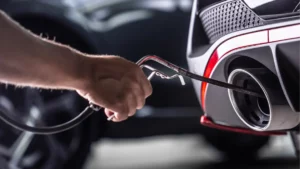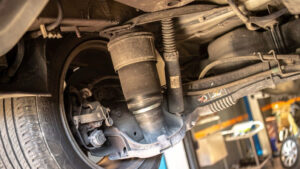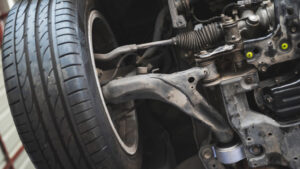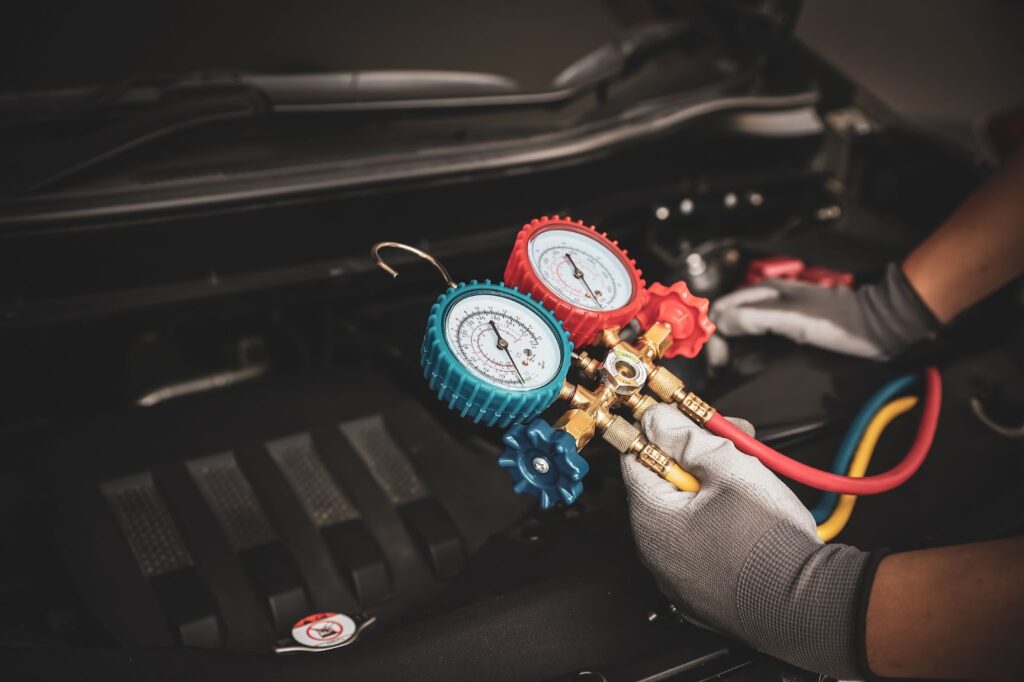
Have you ever wondered what keeps your car from overheating during those long summer drives? The answer lies in the auto cooling system, a crucial component that ensures your vehicle runs smoothly and efficiently.
In this article, we’ll dive deep into the world of auto cooling system repair, covering everything from how it works to common repairs and maintenance tips. Whether you’re a car enthusiast or just looking to learn more about your vehicle, this guide is for you!
How Does an Auto Cooling System Work?
The auto cooling system is a critical component of a vehicle, designed to manage the engine’s temperature and prevent it from overheating. This system’s operation is complex yet elegantly simple, mirroring in many ways the principles of thermodynamics and fluid mechanics.
1. Coolant Composition
The coolant, a mixture of water and antifreeze, serves as the heat transfer medium. The antifreeze raises the boiling point and lowers the freezing point of the mixture, ensuring it remains liquid under a wide range of temperatures, which is essential for consistent engine performance.
2. Heat Absorption in the Engine
As the engine runs, it generates heat due to fuel combustion. The coolant circulates through channels in the engine block and cylinder head, absorbing this heat. This process is crucial in maintaining the engine at an optimal operating temperature, preventing damage that can occur from excessive heat.
3. Heat Dissipation via the Radiator
The heated coolant then flows to the radiator, typically located at the front of the vehicle. The radiator’s design, featuring thin metal fins, maximizes surface area for heat dissipation. Airflow through the radiator, either from vehicle motion or a fan, cools the coolant before it returns to the engine.
4. Thermostat Regulation
The thermostat acts as a temperature-sensitive control valve. It remains closed when the engine is cold, allowing it to reach its operating temperature quickly. Upon reaching this temperature, the thermostat opens, allowing coolant to flow to the radiator. This regulation is vital for efficient engine operation and fuel economy.
5. Water Pump Circulation
The water pump, driven by the engine’s drive belt or timing belt, ensures continuous coolant circulation. It pumps the coolant from the radiator back into the engine, maintaining a consistent flow for effective heat transfer.
6. System Integrity and Hoses
The integrity of the cooling system is maintained by a series of hoses and seals which must remain airtight to prevent coolant leaks. These components are subject to wear and should be inspected regularly.
What are the Common Warning Signs of a Cooling System Problem?
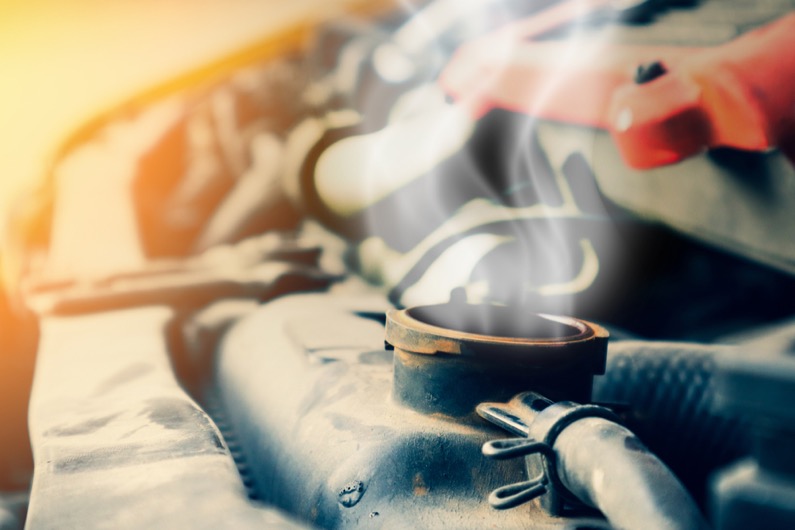
The cooling system in your vehicle plays a pivotal role in maintaining engine health and efficiency. Being aware of the common warning signs of a cooling system problem can prevent costly repairs and extend the life of your vehicle.
Here are some key indicators to watch for:
Engine Overheating
This is the most noticeable sign. The temperature gauge on your dashboard will climb, potentially entering the red zone, indicating that the engine is running hotter than it should. Overheating can lead to severe engine damage if not addressed promptly.
Coolant Leaks
Puddles of coolant under your car are a clear indicator of a leak in the cooling system. Coolant typically has a bright green, pink, or yellow color and a sweet smell. Leaks can occur in various places, including the radiator, hoses, or water pump. Losing coolant can rapidly lead to engine overheating as the system fails to dissipate heat effectively.
Strange Noises from the Radiator or Water Pump
Gurgling, boiling, or whining sounds from the area of the radiator or water pump can signal trouble. These noises might indicate air trapped in the system, a failing water pump, or boiling coolant – all of which are signs of potential cooling system issues.
Heater Malfunction
If your car’s heater isn’t working correctly or blowing cold air when it should be hot, this could be a sign of a problem in the cooling system. It may indicate low coolant levels or a blockage in the heater core.
Radiator Hose Issues
Check for signs of wear, cracks, or bulges on the radiator hoses. These hoses are vital for the proper flow of coolant. A damaged hose can lead to leaks and reduced cooling efficiency.
Steam from the Engine Bay
If you notice steam emanating from under the hood, it’s a clear sign that your engine is overheating and the coolant is boiling. This requires immediate attention to avoid engine damage.
Coolant Odor
A sweet, syrup-like odor in your car can indicate a coolant leak. The distinctive smell of coolant is often noticeable before visible signs of a leak are apparent.
Frequent Need to Add Coolant
If you find yourself needing to add coolant frequently, it could indicate a slow leak or gradual consumption within the cooling system.
Discoloration or Rust in the Coolant
Rust-colored or discolored coolant can indicate corrosion within the cooling system, possibly due to old coolant or a lack of proper maintenance.
Diagnosing Cooling System Problems
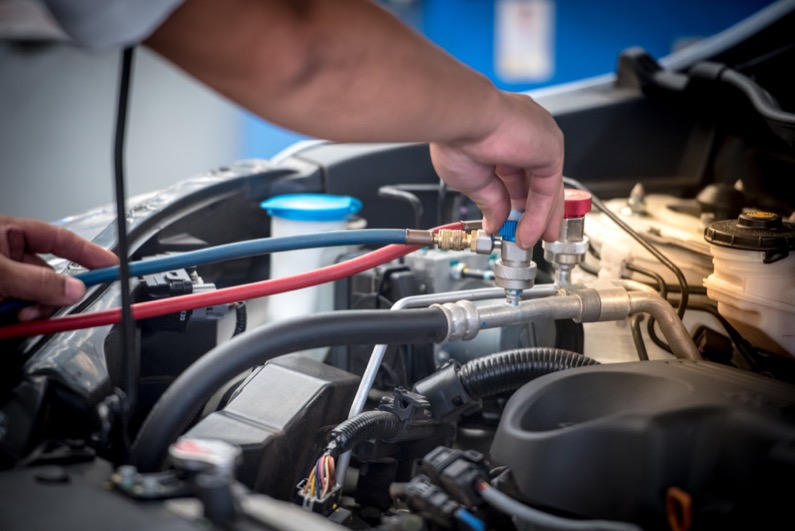
Accurately diagnosing problems in your vehicle’s cooling system is crucial for maintaining engine health and performance. Think of it as a detective’s work, where each sign or symptom can lead to uncovering the underlying issue.
Here’s a detailed approach to diagnosing cooling system problems:
1. Visual Inspection for Leaks
Begin with a thorough visual inspection of the entire cooling system. Look for signs of leaks in the radiator, hoses, water pump, and the connections between them. Coolant leaks are often identifiable by stains or puddles under the vehicle and can also be detected by a distinctive sweet smell.
2. Check Coolant Levels and Condition
Open the radiator cap (only when the engine is cool) to check the coolant level and condition. Low coolant levels might indicate a leak. Also, the coolant should be free of debris and not have a rusty or milky appearance, which can indicate internal engine issues or contamination.
3. Inspect the Radiator
Examine the radiator for any signs of damage, corrosion, or blockage. Ensure that the fins are clean and not clogged with debris, as this can impede airflow and cooling efficiency.
4. Evaluate the Thermostat
The thermostat’s proper functioning is crucial for regulating the engine’s temperature. A common method to test the thermostat is by observing how quickly the upper radiator hose heats up after starting a cold engine. If it heats up too quickly, the thermostat may be stuck open. If it takes an excessively long time or the engine overheats, the thermostat might be stuck closed.
5. Assess the Water Pump
The water pump should be checked for leaks or a noisy bearing, which can indicate it’s failing. A malfunctioning water pump can lead to inadequate coolant circulation and overheating.
6. Check the Cooling Fan
Ensure that the cooling fan, whether mechanical or electric, is operating correctly. A malfunctioning fan can lead to overheating, especially when the vehicle is stationary or moving slowly.
7. Pressure Test the System
A cooling system pressure test can help identify leaks that are not easily visible. This test involves pressurizing the system and observing if the pressure holds, which can indicate the system’s integrity.
8. Examine the Heater Core
If you experience heating issues inside the cabin or notice a coolant smell, the heater core might be blocked or leaking. It’s an integral part of the system, often overlooked in diagnoses.
9. Scan for Error Codes
Modern vehicles are equipped with onboard diagnostics (OBD). Use an OBD scanner to check for any error codes that could relate to the cooling system, such as thermostat or sensor malfunctions.
10. Inspect Belts and Hoses
Check the condition of belts and hoses connected to the cooling system. Look for cracks, leaks, and signs of wear. These components are essential for the effective operation of the cooling system.
11. Monitor Engine Temperature
Finally, monitor the engine temperature gauge while driving. Fluctuations or a consistently high reading can indicate cooling system issues.
Common Auto Cooling System Repairs
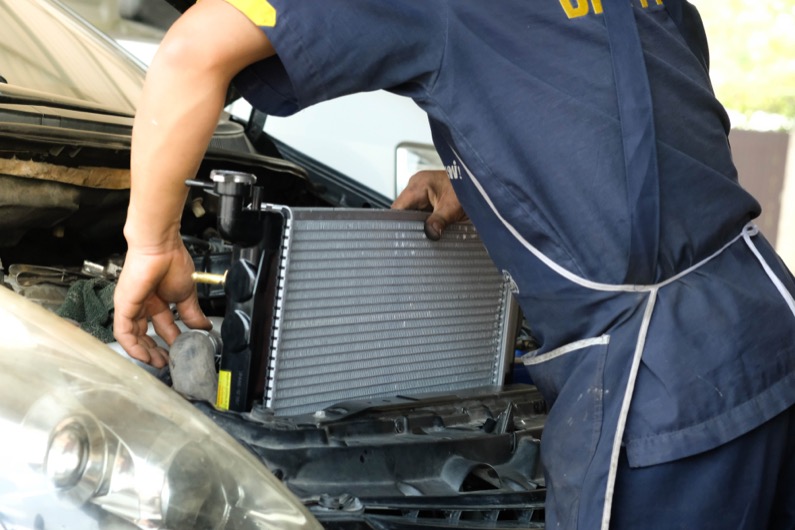
Auto cooling system repairs are varied, depending on the nature and severity of the issue at hand. Understanding these common repairs can help car owners make informed decisions about their vehicle maintenance.
Hose Replacements
One of the most straightforward repairs in the cooling system involves replacing hoses. These hoses, which transport coolant between the engine, radiator, and heater core, can become brittle, cracked, or leaky over time. Replacing them is essential to maintain a sealed and efficient cooling system. It’s a relatively inexpensive repair but crucial for preventing coolant loss and subsequent engine overheating.
Radiator Repairs
The radiator, which dissipates heat from the coolant, can also face issues like blockages or leaks. Repairs can range from patching up small leaks to complete replacement in case of significant damage or corrosion. A well-functioning radiator is essential for the cooling system’s efficacy, making timely repairs important.
Water Pump Replacement
The water pump, a key component, often requires attention. It circulates the coolant throughout the engine and the cooling system. If the water pump fails, it can lead to insufficient coolant circulation, resulting in engine overheating. Water pump repairs can be more complex and costly, often necessitating professional intervention.
Thermostat Replacement
The thermostat regulates the flow of coolant based on the engine temperature. A malfunctioning thermostat can cause the engine to overheat or run too cold, impacting its efficiency and longevity. Replacing a faulty thermostat is a common repair that ensures the engine operates within its optimal temperature range.
Flushing the Coolant System
Over time, the coolant can become contaminated or lose its efficacy. A coolant flush involves draining the old coolant, cleaning the system to remove any sediment or contaminants, and then refilling it with fresh coolant. This process helps in maintaining the efficiency of the cooling system and preventing corrosion and blockages.
The Importance of Regular Cooling System Maintenance
Regular maintenance of the cooling system in your vehicle is crucial for ensuring optimal performance and longevity of the engine. Much like the human body relies on a well-functioning circulatory system, a car depends on its cooling system to regulate engine temperature and prevent overheating. This maintenance typically involves routine checks of the coolant level and quality, inspecting hoses, the radiator, and the water pump for signs of wear or leaks, and ensuring the thermostat functions properly.
Neglecting these aspects can lead to more significant, costly issues down the line, such as engine overheating or severe damage. Hence, regular cooling system maintenance is not just a recommendation, but a necessity for the health and efficiency of your vehicle.
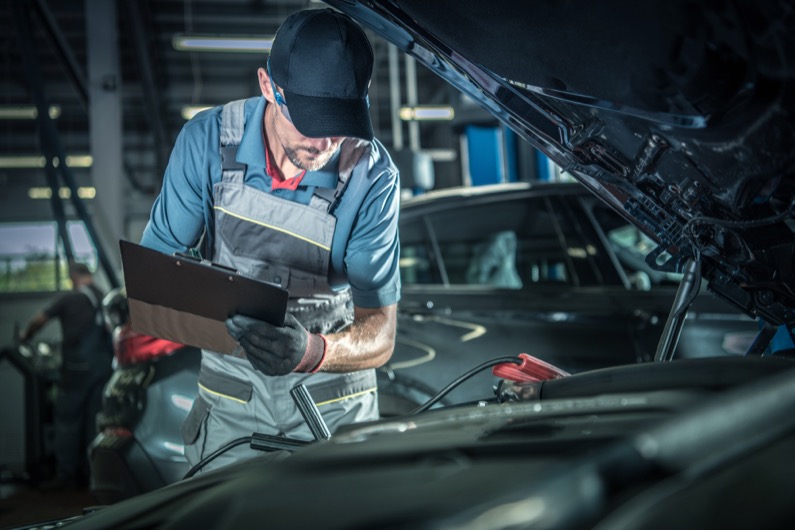
DIY vs. Professional Repairs
When it comes to repairing the auto cooling system, the line between DIY and professional work is distinct and crucial to recognize. For those with a basic understanding of car mechanics, undertaking simple repairs like replacing hoses or changing coolant can be manageable and rewarding. These DIY tasks offer a sense of accomplishment and can be lighter on the wallet. However, the intricacies of auto cooling systems often mean that more complex issues should be approached with caution.
Complex repairs, such as addressing issues with the water pump, radiator, or internal engine problems, typically require a level of expertise and equipment beyond the average DIY enthusiast. The risk of misdiagnosing a problem or implementing an incorrect fix can not only lead to additional damage but also pose safety risks.
Understanding your own limits when it comes to vehicle maintenance and repair is crucial. While it’s admirable to tackle some repairs independently, recognizing when a problem is beyond your skill level is just as important. In such cases, entrusting your vehicle to a qualified and experienced professional is not just a matter of convenience, but also of ensuring the ongoing reliability and safety of your vehicle.
Cost Considerations for Auto Cooling System Repairs
When it comes to fixing your car’s cooling system, the costs can really vary. If you’re just replacing a hose or topping up the coolant, it won’t cost you much – these are pretty straightforward and inexpensive fixes.
However, if you’re dealing with bigger problems, like a broken radiator or a faulty water pump, the price can go up quickly. These kinds of repairs need more time and special skills from a mechanic, which means they’re going to cost more. It’s a good idea to have some money set aside for these kinds of car repairs, just in case. That way, you’re not caught off guard by a big repair bill. Plus, taking care of small problems early can save you from more expensive repairs later on, keeping your car running smoothly for a long time.
Choosing a Reliable Auto Repair Service in Houston, Texas
If you’re in Houston, Texas, and need a trustworthy place to get your car’s cooling system fixed, finding the right auto repair service is key. You’ll want to look for a shop that has a good reputation, like Status Automotive & Collision.
It’s important to pick a place that’s known for doing quality work and has mechanics with the right expertise. A great way to check this is by looking at what other customers have said in their reviews. People usually share their experiences, good or bad, which can give you a good idea of what to expect. Places like Status Automotive & Collision, which get positive feedback and have a strong track record, are usually a safe bet. They can offer the quality repairs your car needs, ensuring it runs smoothly and safely.
Remember, choosing the right repair service is not just about fixing a current problem, but also about trusting your vehicle in the hands of professionals who can help maintain its long-term health.
Future Trends in Auto Cooling System Technology
Auto cooling systems are heading into an exciting future, with some really cool changes on the way. One big thing happening is electric cooling systems. These are different from the old ones because they don’t rely on the car’s engine. This is great because it means the engine doesn’t have to work as hard, and your car might even use less gas. It’s a smart move to make cars more eco-friendly.
Alongside this, there’s also a push to make cooling systems out of new materials that are lighter and stronger, and better at getting rid of heat. This is especially important for electric and hybrid cars, which are becoming more popular. Plus, with new tech like sensors and computer controls, cooling systems can adjust better to how your car is running, making sure everything works just right.
Wrapping Up: Ensuring Your Vehicle’s Health
Regular maintenance and prompt repairs are essential to keep your vehicle’s cooling system in excellent condition. It’s all about being proactive — spotting issues early and addressing them before they escalate. For reliable auto heating and cooling system repair, consider a trusted service like Status Automotive & Collision in Houston. They are experts in automotive cooling system repair, offering professional services to ensure your car runs efficiently and safely.
When it comes to your vehicle’s health, think of the cooling system as its heartbeat. Just as you wouldn’t ignore your own health, don’t overlook the importance of your car’s cooling system. Regular check-ups, including routine inspections and services at places like Status Automotive & Collision, can make a world of difference. Get a quote from them today. They not only keep your car in peak condition but also give you peace of mind. Remember, a little attention to your vehicle’s cooling system goes a long way – your car will indeed thank you for it!

